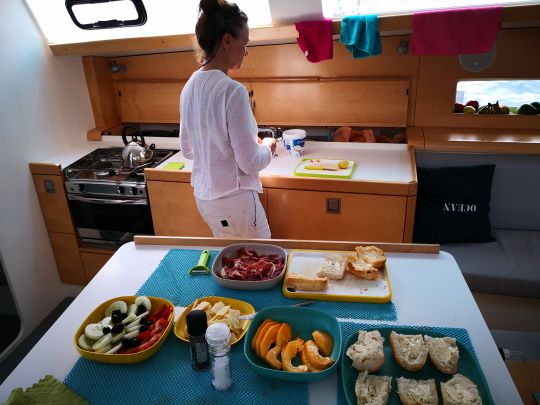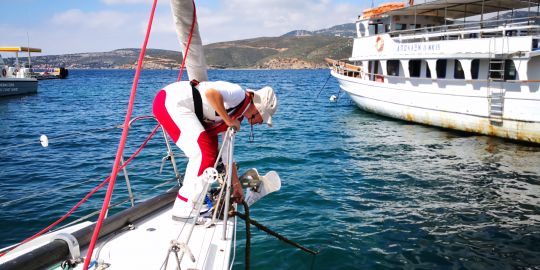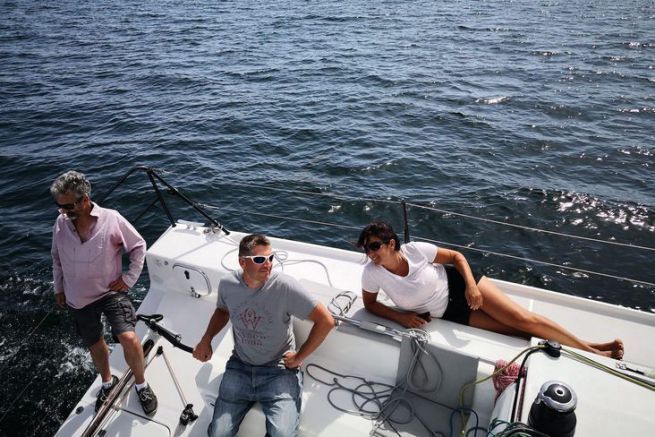Preparing them for navigation
Before setting out to sea, your guests need to know what to prepare and bring on board. It is also important to ensure that they have had enough to eat and drink, even if a meal break is scheduled during the outing. Some people think they can avoid seasickness by not eating. Unfortunately, the exact opposite is likely to happen.

Give them a naval briefing
Your guests will be delighted to know the program of the day and the sailing conditions. The skipper would do well to mention:
- Weather forecasts
- The navigation program
- Where to sit safely and what are the danger zones
- What they can or cannot make bord? do!
- Some of the vocabulary used on the boat.
- Personal safety equipment
- ?
Getting around on board the yacht
Once the basics have been explained, we must talk about safety on board, starting with travel. Novice crewmembers could fall aboard - or worse, overboard - because they are unfamiliar with the motion of a sailboat. To limit the risks, teach them the adage: "keep one hand for yourself and the other for the boat". Emphasize that you must always stand or move around.

Life jackets
The bigger the boat, the less you feel the need to wear a lifejacket, but the size of the sailboat is a decoy. If necessary, it is the skipper who will decide to make the wearing of the vest compulsory. And if you don't impose the vest, make sure that your guests know how to put it on without hesitation
The inevitable maneuvers
Novices should be told that a sailboat must be maneuvered regularly. So, to start the day, once the mainsail is hoisted, do a tack to familiarise the crew with all the hustle and bustle and the change of trim.
But before starting the manoeuvre, tell them what the tacking procedure will be, show them how the boom will sweep across the cockpit and explain how and where to move from one side to the other. And if one of the team members offers to help, it's time to assign him a role.
Eat and drink well
Good hydration is essential. When you start to feel the effect of thirst, it means that you are already dehydrated, you must act. Make sure there is enough water on board for all crew members and encourage them to drink... from eau?!
The same goes for food: you must have something to eat, no matter how long you are at sea. Nature likes to surprise us and when a grain arrives at lunch time, the crew will be delighted to wait with an apple, a piece of cheese or a cereal bar.

Port manoeuvres
When you arrive at the harbour, explain to your guests how they can help with the manoeuvre. Above all, warn them that hands, feet and legs never replace a bumper, which can be replaced if necessary. Advise them to stay away in case of emergency.

Pleasure above all
The most important goal: sailing should be fun. Take your time, if necessary slow down your boat and the explanations. Sail with one reef, adapt the sailing program, limit the gite. If there are children on board, give them the opportunity to use a winch or the helm if conditions permit. Maintain a conversation with the crew to gauge their motivation and state of fitness. It's easier to scare a novice than it is to pass on your passion, so be patient.
And to finish off the sea trip well, instead of arriving at the pontoon under sail, sail a little earlier and offer your guests a visit and a harbour manoeuvre that is as relaxing as possible. With a little preparation and foresight, novices may become future enthusiasts.

 /
/ 













